| Peugeot S.A. | |
|---|---|
 | |
| Type | Public subsidiary of PSA Peugeot Citroen |
| Founded | 1882 |
| Headquarters | |
| Key people | Christian Streiff (CEO), Jérôme Gallix (Head Design) |
| Industry | Auto and Truck Manufacturers |
| Products | Peugeot 207, Peugeot 308, Peugeot 807, Peugeot 206,etc. |
| Revenue | ▲ €56.3 billion (2005) |
| Net income | ▲ €1.0 billion (2005) |
| Employees | 207,200 (2005) PSA Group |
| Website | www.peugeot.com |
Peugeot is a major French car brand, part of PSA Peugeot Citroën. It is the second largest automaker in Europe, behind Volkswagen. Peugeot's roots go back to pepper, salt and coffee mill manufacturing in 1842 and later bicycle manufacturing at the end of the 19th century. Its world headquarters are in Paris, Avenue de la Grande Armée, close to Porte Maillot and the Concorde Lafayette Hotel but the Peugeot company and family is originally from Sochaux, France. Peugeot retains a large manufacturing plant in Sochaux which is also home to the Peugeot Museum. The company also sponsors the Sochaux football club, founded in 1928 by a member of the Peugeot family: the club' s arms contain a lion logo similar to Peugeot's.
[edit] Company history
[edit] Early history
The Peugeot family of Valentigney, Montbeliard, Franche-Comte, France, began manufacturing coffee grinders in the 1800s. Although the Peugeot factory had been in the manufacturing business since the 1700s,[1] the company's entry into the world of wheeled vehicles was by means of crinoline dresses, which used steel rods, leading to umbrella frames, wire wheels, and ultimately bicycles.[2] Armand Peugeot introduced his "Le Grand Bi" penny-farthing in 1882 and along with a range of other bicycles. Peugeot bicycles continued to be built until very recently, although the car company and bike company parted ways in 1926.
Armand Peugeot became interested in the automobile early on, and after meeting with Gottlieb Daimler and others, was convinced of its viability. The first Peugeot automobile (a three-wheeled steam-powered car designed by Léon Serpollet) was produced in 1889; only four were made.[3] Steam power was heavy and bulky and required lengthy warmup times. In 1890, after meeting Gottlieb Daimler and Emile Levassor, steam was abandoned in favour of a four-wheeled car with a petrol-fuelled internal combustion engine built by Panhard under Daimler licence. The car was more sophisticated than many of its contemporaries, with a three-point suspension and a sliding-gear transmission.[4]
More cars followed, twenty-nine being built in 1892, forty in 1894, seventy-two in 1895, 156 in 1898, and fully three hundred in 1899.[5] These early models were given "Type" numbers with the Type 12, for example, dating from 1895. Peugeot became the first manufacturer to fit rubber tires to a petrol-powered car that year (solid tires).[citation needed] Peugeot was also an early pioneer in motor racing, entering the 1894 Paris-Rouen Rally with five cars[6] (placing second, third {Pierre Giffard, who had conceived the trial}, and fifth {Koechlin})[4] and the 1895 Paris-Bordeaux with three, where they were beaten by Panhard's car[7] (despite an average speed of 20.8 km/h (12.9 mph)[8] and taking the 31,500 franc prize.[9] This also marked the debut of Michelin pneumatic tyres in racing,[10] also on a Peugeot; they proved insufficiently durable.[11] Nevertheless, the vehicles were still very much horseless carriages in appearance and were steered by a tiller.
1896 saw the first Peugeot engines built; no longer were they reliant on Daimler. Designed by Rigoulot, the first engine was an 8 hp (6.0 kW) horizontal twin fitted to the back of the Type 15.[10] It also served as the basis of a nearly exact copy produced by Rochet-Schneider.[10] Further improvements followed: the engine moved to the front on the Type 48 and was soon under a hood (bonnet) at the front of the car, instead of hidden underneath; the steering wheel was adopted on the Type 36; and they began to look more like the modern car.
In 1896 Armand Peugeot broke away from Les Fils de Peugeot Frères to form his own company, Société Anonyme des Automobiles Peugeot, building a new factory at Audincourt to focus entirely on cars.[10] In 1899, sales hit 300; total car sales for all of France that year were 1200.[10] The same year, Lemaitre won the Nice-Castellane-Nice Rally in a special 5,850 cc (357 cu in) 20 hp (14.9 kW) racer.[10]
At the 1901 Paris Salon, Peugeot debuted a tiny shaft-driven 652 cc (40 cu in) 5 hp (3.7 kW) one-cylinder, dubbed Bébé (Baby), and shed its conservative image, becoming a style leader.[12] After placing nineteenth in the 1902 Paris-Vienna rally with a 50 hp (37.3 kW) 11,322 cc (691 cu in) racer, and failing to finish with two similar cars, Peugeot quit racing.[12]
Peugeot added a motorcycle to its range in 1903, and motorcycles have been built under the Peugeot name ever since. By 1903, Peugeot produced half of the cars built in France, and they offered the 5 hp (4 kW) Bébé, a 6.5 hp (4.8 kW) four-seater, and an 8 hp (6.0 kW) and 12 hp (8.9 kW) resembling contemporary Mercedes models.[12]
The 1907 Salon showed Peugeot's first six-cylinder, and marked Tony Huber joining as engine builder.[12] By 1910, Peugeot's product line included a 1,149 cc (70 cu in) two-cylinder and six four-cylinders, of between 2 litres and 6 liters. In addition, a new factory opened the same year at Sochaux, which became the main plant in 1928.[13]
A more famous name, Ettore Bugatti, designed the new 850 cc (52 cu in) four-cylinder Bébé of 1912.[12] The same year, Peugeot returned to racing with a team of three driver-engineers (a breed typical of the pioneer period, exemplified by Enzo Ferrari among others): Jules Goux (graduate of Arts et Metiers, Paris), Paolo Zuccarelli (formerly of Hispano-Suiza), and Georges Boillot (collectively called Les Charlatans), with 26 year old Swiss engineer Ernest Henry to make their ideas reality. The company decided voiturette (light car) racing was not enough, and chose to try grandes épreuves (grand touring). They did so with an engineering tour de force: a DOHC 7.6 liter four cylinder (110x200 mm) with four valves per cylinder.[14] It proved faster than other cars of its time, and Boillot won the 1912 French Grand Prix at an average of 68.45 mph (110.2 km/h), despite losing third gear and taking a twenty minute pit stop.[15] In May 1913, Goux took one to Indianapolis, and won at an average of 75.92 mph (122.2 km/h), recording straightaway speeds of 93.5 mph (150.5 km/h).[16] In 1914, Boillot's 3 liter L5 set a new Indy lap record of 99.5 mph (160.1 km/h), and Duray placed second (beaten by ex-Peugeot ace Réné Thomas in a 6,235 cc (380 cu in) Delage).[17] Another (driven by Boillot's brother, André) placed in 1915; similar models won in 1916 (Dario Resta) and 1919 (Howdy Wilcox).
For the 1913 French Grand Prix, an improved L5 (with 5,655 cc (345 cu in) engine) was produced with a pioneering ballbearing crankshaft, gear-driven camshafts, and dry sump lubrication, all of which soon became standard on racing cars; unfortunately, Zuccarelli was killed during testing on public roads,[18] but Boillot easily won the event, making him (and Peugeot) the race's first double winner.[19] For the 1914 French GP, Peugeot was overmatched by Mercedes, and despite a new innovation, four-wheel brakes (against the Benz's rear-only), Georges proved unable to match them and the car broke down.[20] (Surprisingly, a 1914 model turned a 103 mph (165.8 km/h) lap in practice at Indy in 1949, yet it failed to qualify.)[21] Peugeot was more fortunate in 1915, winning at the French GP and Vanderbilt Cup.[21]
During the First World War, Peugeot turned largely to arms production, becoming a major manufacturer of arms and military vehicles, from bicycles to tanks and shells.
[edit] Inter war years
Postwar, car production resumed in earnest.
Racing continued as well, with Boillot entering the 1919 Targa Florio in a 2.5 liter (150ci) car designed for an event pre-empted by World War One; the car had 200,000 km (124,000 mi) on it, yet Boillot won with an impressive drive (the best of his career)[21] Peugeots in his hands were third in the 1925 Targa, first in the 1922 and 1925 Coppa Florios, first in the 1923 and 1925 Touring Car Grands Prix, and first at the 1926 24 Heures du Spa.[21] Peugeot introduced a five valve per cylinder, triple overhead cam engine for the Grand Prix, conceived by Marcel Gremillon (who had criticised the early DOHC); but the engine was a failure.[21]
The same year, Peugeot debuted 10 hp (7.5 kW) and 14 hp (10.4 kW) fours, the larger based on the Type 153, and a 6 liter 25 hp (19 kW) sleeve valve six, as well as a new cyclecar, La Quadrilette.[21]
During the '20s, Peugeot expanded, in 1926 splitting the cycle (pedal and motor) business off to form Cycles Peugeot, the consistently profitable cycle division seeking to free itself from the rather more cyclical auto business, and taking over the defunct Bellanger and De Dion companies in 1927.[21] 1928 saw the introduction of the Type 183.
New for 1929 was the Type 201, the cheapest car on the French market,[21] and the first to use the later Peugeot trademark (and registered as such)—three digits with a central zero. The 201 would get independent front suspension in 1931,[22] the first mass-produced car to have it.[citation needed] Soon afterwards the Depression hit; Peugeot sales decreased but the company survived.
In 1933, attempting a revival of fortune, the company unveiled a new, aerodynamically styled range. In 1934 Peugeot introduced the 402BL Éclipse Décapotable, the first convertible with a retractable hardtop[23] — an idea followed later by the Ford Skyliner in the 1950s and revived in the modern era by the Mitsubishi 3000GT Spyder in 1995. More recently, many manufacturers have offered retractable hardtops, including Peugeot itself with the 206 cc.
Three interesting models of the thirties were the Type 202, Type 302 and Type 402. These cars had curvaceous bodies, with headlights behind sloping grille bars, evidently inspired by the Chrysler Airflow.[24] The 2.1 liter[24] 402 entered production in 1935 and was produced until the end of 1941, despite France's occupation by the Nazis. For 1936, there was the new Airflow-inspired 302 (which ran until 1938) and a 402-based large model, designed by Andrean, which featured a vertical fin and bumper, with the first high-mounted taillight.[24] The entry-level 202 was built in series from 1938-1942, and about 20 more examples were built from existing stocks of supplies in February 1945. The 202 lifted Peugeot's sales in 1939 to 52,796, just behind Citroën.[25] Regular production began again in mid-1946, and lasted into 1949.
[edit] Post World War II
In 1946,[25] the company restarted car production with the 202, delivering 14000 copies.[24] In 1947, Peugot introduced the Type 203, with coil springs, rack-and-pinion steering, and hydraulic brakes.[25] The 203 set new Peugeot sales records, remaining in production until 1960.[24]
Peugeot would take over Chenard-Walcker and buy a part of Hotchkiss in 1950,[25] then introduce a popular model in 1955: the Type 403. With a 1.5 liter engine, it sold one million copies by the end of its production run in 1962, [26]
The company began selling cars in the United States in 1958, and in 1960 introduced the Type 404, which used a 1,618 cc (99 cu in) version of the 403 engine, tilted 45o. The 404 proved rugged enough to win the East African Safari Rally, in four of the six years between 1963 and 1968.
More models followed, many styled by Pininfarina. Like many European manufacturers, collaboration with other firms increased; Peugeot worked with Renault from 1966 and Volvo from 1972.
[edit] Take over of Citroën and formation of PSA
In 1974 Peugeot bought a 30% share of Citroën, and took it over completely in 1975 after the French government gave large sums of money to the new company. Citroën was in financial trouble because it developed too many radical new models for its financial resources. Some of them, notably the Citroën SM and the Comotor rotary engine venture proved unprofitable. Others, the Citroën CX and Citroën GS for example, proved very successful in the marketplace.
The joint parent company became the PSA (Peugeot Société Anonyme) group, which aimed to keep separate identities for both the Peugeot and Citroën brands, while sharing engineering and technical resources. Peugeot thus briefly controlled the valuable racing brand name Maserati, but disposed of it in May 1975 out of short term financial concerns.[citation needed]
Both Citroën enthusiasts and automotive journalists point out that the company's innovation and flair took a marked downturn with the acquisition. The Citroën brand has continued to be successful in terms of sales, and now achieves over a million units annually.
[edit] Take over of Chrysler Europe
The group then took over the European division of Chrysler (which were formerly Rootes and Simca), in 1978 as the American auto manufacturer struggled to survive. Further investment was required because PSA decided to create a new brand for the entity, based on the Talbot sports car last seen in the 1950s. From then on, the whole Chrysler/Simca range was sold under the Talbot badge until production of Talbot-branded passenger cars was shelved in 1986.
The flagship of this short-lived brand was the Tagora, a direct competitor to PSA's 604 and CX models. This was a large, angular saloon based on Peugeot 505 mechanicals.
All of this investment caused serious financial problems for the entire PSA group; PSA lost money from 1980 to 1985. The Peugeot takeover of Chrysler Europe had seen the aging Chrysler Sunbeam, Horizon, Avenger and Alpine ranges rebranded as Talbots. There were also new Talbots in the early 1980s—the Solara (a saloon version of the Alpine hatchback), and the Samba (a small hatchback to replace the Sunbeam).
In 1983 Peugot launched the popular and successful Peugeot 205, which is largely credited for turning the company's fortunes around.[citation needed]
In 1984 PSA developed its first contacts with The People's Republic of China, resulting in the successful Dongfeng Peugeot-Citroën Automobile venture in Wuhan.
In 1986, the company dropped the Talbot brand for passenger cars when it ceased production of the Simca-based Horizon/Alpine/Solara models. What was to be called the Talbot Arizona became the 309, with the former Rootes plant in Ryton and Simca plant in Poissy being turned over for Peugeot assembly. Producing Peugots in Ryton was significant, as it signalled the very first time Peugeots would be built in Britain. The Talbot name survived for a little longer on commercial vehicles until 1992 before being shelved completely.
As experienced by other European volume car makers, Peugot's U.S. and Canadian sales faltered and finally became uneconomical, as the Peugeot 505 design aged. Several ideas to turn around sales in the United States, such as including the Peugeot 205 in its lineup, were considered but not pursued. In the early nineties, the newly introduced Peugeot 405 proved uncompetitive with domestic and import models in the same market segment, and sold less than 1,000 units. Total sales fell to 4,261 units in 1990 and 2,240 through July, 1991. This caused the company to cease U.S. And Canada operations after 33 years. There are currently no known plans to return to the American market.
Peugeot currently sells vehicles in Mexico.Peugeot Mexico
Beginning in the late 1990s, with Jean-Martin Folz as president of PSA, the Peugeot-Citroën combination seems to have found a better balance. Savings in costs are no longer made to the detriment of style.
On April 18, 2006, PSA Peugeot Citroën announced the closure of the Ryton manufacturing facility in Coventry, England. This announcement resulted in the loss of 2,300 jobs as well as about 5,000 jobs in the supply chain. The plant produced its last Peugeot 206 on December 12, 2006 and finally closed down in January 2007.
Peugeot is developing a diesel-electric hybrid version of the Peugeot 307 that can reach 80 mpg.[clarify] It is a 2-door cabriolet and is currently only in the concept stages, but if it reaches production would be one of the more fuel efficient cars available.[citation needed]. Peugeot will make a new car in 2008 with the name Peugeot 407.
[edit] Motorsports
Peugeot was involved in motorsport from the earliest days and entered five cars for the Paris-Rouen Trials in 1894 with one of them, driven by Lemaitre, finishing second. These trials are usually regarded as the first motor sporting competition. Participation in a variety of events continued until World War I, but it was in 1912 that Peugeot made its most notable contribution to motor sporting history when one of their cars, driven by Georges Boillot, won the French Grand Prix at Dieppe. This revolutionary car was powered by a straight-4 engine designed by Ernest Henry under the guidance of the technically knowledgeable racing drivers Paul Zuccarelli and Georges Boillot. The design was very influential for racing engines as it featured for the first time DOHC and four valves per cylinder providing for high engine speeds, a radical departure from previous racing engines which relied on huge displacement for power. In 1913 Peugeots of similar design to the 1912 Grand Prix car won the French Grand Prix at Amiens and the Indianapolis 500. When one of the Peugeot racers remained in the United States during World War I and parts could not be acquired from France for the 1914 season, owner Bob Burma had it serviced in the shop of Harry Arminius Miller by a young mechanic named Fred Offenhauser. Their familiarity with the Peugeot engine was the basis of the famed Miller racing engine, which later developed into the Offenhauser, or "Offy" racing engine.
The company has had much success in international rallying, notably with the durable Peugeot 504, the four-wheel-drive turbo-charged versions of the Peugeot 205, and more recently the Peugeot 206. The 206 rally car had significant success in the rally championship, beating the Subaru Impreza, Ford Focus and Mitsubishi Lancer, cars which had traditionally dominated the sport. The 206 was retired practically unbeaten after several successful years, and replaced with the comparatively disappointing Peugeot 307 cc.
Throughout the mid-1990s, the Peugeot 406 saloon (called a sedan in some countries) contested touring car championships across the world, enjoying success in France, Germany and Australia, yet failing to win a single race in the British Touring Car Championship despite a number of podium finishes under the command of 1992 British Touring Car Champion Tim Harvey.
The British cars were prepared by Prodrive in 1996, when they sported a red livery, and by MSD in 1997-1998, when they wore a distinctive green and gold flame design. Initially the 406's lack of success was blamed on suspension problems, but it is now clear that the team was underfunded and the engine lacked power.[citation needed]
In 2001, Peugeot entered three 406 coupes into the British touring car championship to compete with the dominant Vauxhall Astra coupes. Unfortunately the 406 coupe was at the end of its product life-cycle and was not competitive, despite some promise towards the end of the year, notably when Peugeot's Steve Soper led a race only to suffer engine failure in the last few laps. The 406 coupes were retired at the end of the year and replaced with the Peugeot 307—again, uncompetitively—in 2002.
Peugeot won the Manufacturers title of the World Rally Championship in 1985 and 1986 with its 205 T16. Peugeot won the manufacturers championship again in 2000, 2001 and 2002 with the 206. Peugeot won the grueling Paris Dakar Rally each year from 1987 to 1990.
In the 1990s the company competed in the Le Mans 24 Hours race, winning in 1992 and 1993 with the 905. After early problems with reliability and aerodynamics, the 905 was also successful in the World Sportscar Championship, winning eight of the 14 races across the 1991 and 1992 seasons and winning the team and driver titles in 1992. Peugeot returned to sportscar racing and Le Mans in 2007, with the diesel-powered 908. Peugeot is also involved with the Courage C60 Le Mans racing team.
The company has also been involved in providing engines to Formula One teams, notably to McLaren in 1994, to Jordan for the 1995, 1996 and 1997 seasons, and to Prost for the 1998, 1999 and 2000 seasons. Peugeot's F1 interests were sold to Asiatech at the end of the 2000 season.
[edit] Peugeot model numbers

Peugeot chooses the names used on its models in the form x0y or x00y, where x describes the size of the car (and hence its class) and y describes the model number (the higher the number, the newer the model). Thus a Peugeot 406 is bigger and newer than a Peugeot 305. This rule has its exceptions: for instance the Peugeot 309 was produced before the Peugeot 306—the out-of-step number signified the 309's Talbot underpinnings rather than it coming from a Peugeot lineage. Variants are also excluded: the 206 SW, for example, is about the same length as a "40y" car.
This tradition began in 1929 with the launch of the 201, which followed the 190. All numbers from 101 to 909 have been deposited as trademarks. Although in 1963 Porsche was forced to change the name of its new 901 coupé to 911, certain Ferraris and Bristols have been allowed to keep their Peugeot-style model numbers. An unsubstantiated explanation for the central '0' is that on early models the number appeared on a plate on the front of the car, with the hole for the starting handle coinciding with the zero. More recently, on the 307 cc and the 607 the button to open the trunk is located in the '0' of the label.
For specific niche models such as minivans or SUVs, Peugeot is now using a four digit system, with a double zero in the middle. It was tested with the 4002 concept car. The 1007 used this system when it was launched in 2005, and the new Peugeot Crossover SUV is named 4007.
Peugeot has also announced that after the 9 series, it would start again with 1, producing new 201, 301 or 401.
Peugeot has produced three winners of the European Car of the Year award.
- 1969: Peugeot 504
- 1988: Peugeot 405
- 2002: Peugeot 307
Other Peugeot models have come in either second or third in the contest.
- 1980: Peugeot 505
- 1984: Peugeot 205
- 1996: Peugeot 406
- 1999: Peugeot 206
[edit] Other products
Peugeot also produced bicycles starting in 1882 in Beaulieu, France (with ten Tour de France wins between 1903 and 1983) followed by motorcycles and cars in 1889. In the late 1980s Peugeot sold the North American rights to the Peugeot bicycle name to ProCycle in Canada (also known as CCM and better known for its ice hockey equipment) and the European rights to Cycleurope S.A.
Peugeot remains a major producer of scooters, mopeds and bicycles in Europe.[27][28]
[edit] Pronunciation
The common French pronunciation of "Peugeot" is IPA: [pøːˈʒo]. In England it is usually pronounced /ˈpɜːʒoʊ/ "PERzho", while Americans pronounce it /puːˈʒoʊ/ "pooZHO" or /ˈpjuːʒoʊ/ "PYOOzho". Peugeot cars have been given the nicknames: 'pug' and 'pugs' in the UK. In Malta some people pronounce "Peugeot" as PUGU. In those parts of North Africa that were colonised by the French—Algeria, Tunisia and Morocco—"Peugeot" is often pronounced in the same way as the word "bijou" ("jewel"), both because of the sometimes indistinguishable quality of vowels in Arabic when translated into French, and through affection.
歡迎來到Bewise Inc.的世界,首先恭喜您來到這接受新的資訊讓產業更有競爭力,我們是提供專業刀具製造商,應對客戶高品質的刀具需求,我們可以協助客戶滿足您對產業的不同要求,我們有能力達到非常卓越的客戶需求品質,這是現有相關技術無法比擬的,我們成功的滿足了各行各業的要求,包括:精密HSS DIN切削刀具、協助客戶設計刀具流程、DIN or JIS 鎢鋼切削刀具設計、NAS986 NAS965 NAS897 NAS937orNAS907 航太切削刀具,NAS航太刀具設計、超高硬度的切削刀具、BW捨棄式鑽石V卡刀’BW捨棄式金屬圓鋸片、木工捨棄式金屬圓鋸片、PCD木工圓鋸片、醫療配件刀具設計、汽車業刀具設計、電子產業鑽石刀具、全鎢鋼V卡刀-電路版專用’全鎢鋼鋸片、焊刃式側銑刀、焊刃式千鳥側銑刀、焊刃式T型銑刀、焊刃式千鳥T型銑刀、焊刃式螺旋機械鉸刀、全鎢鋼斜邊刀電路版專用、鎢鋼焊刃式高速鉸刀、超微粒鎢鋼機械鉸刀、超微粒鎢鋼定點鑽、焊刃式帶柄角度銑刀、焊刃式螺旋立銑刀、焊刃式帶柄倒角銑刀、焊刃式角度銑刀、焊刃式筒型平面銑刀、木工產業鑽石刀具等等。我們的產品涵蓋了從民生刀具到工業級的刀具設計;從微細刀具到大型刀具;從小型生產到大型量產;全自動整合;我們的技術可提供您連續生產的效能,我們整體的服務及卓越的技術,恭迎您親自體驗!!
BW Bewise Inc. Willy Chen willy@tool-tool.com bw@tool-tool.com www.tool-tool.com skype:willy_chen_bw mobile:0937-618-190 Head &Administration Office No.13,Shiang Shang 2nd St., West Chiu Taichung,Taiwan 40356 http://www.tool-tool..com / FAX:+886 4 2471 4839 N.Branch 5F,No.460,Fu Shin North Rd.,Taipei,Taiwan S.Branch No.24,Sec.1,Chia Pu East Rd.,Taipao City,Chiayi Hsien,Taiwan
Welcome to BW tool world! We are an experienced tool maker specialized in cutting tools. We focus on what you need and endeavor to research the best cutter to satisfy users’ demand. Our customers involve wide range of industries, like mold & die, aerospace, electronic, machinery, etc. We are professional expert in cutting field. We would like to solve every problem from you. Please feel free to contact us, its our pleasure to serve for you. BW product including: cutting tool、aerospace tool .HSS DIN Cutting tool、Carbide end mills、Carbide cutting tool、NAS Cutting tool、NAS986 NAS965 NAS897 NAS937orNAS907 Cutting Tools,Carbide end mill、disc milling cutter,Aerospace cutting tool、hss drill’Фрезеры’Carbide drill、High speed steel、Milling cutter、CVDD(Chemical Vapor Deposition Diamond )’PCBN (Polycrystalline Cubic Boron Nitride) ’Core drill、Tapered end mills、CVD Diamond Tools Inserts’PCD Edge-Beveling Cutter(Golden Finger’Edge modifying knife’Solid carbide saw blade-V type’V-type locking-special use for PC board’Metal Slitting Sawa’Carbide Side milling Cutters’Carbide Side Milling Cutters With Staggered Teeth’Carbide T-Slot Milling Cutters’Carbide T-Slot Milling Cutters With Staggered Teeth’Carbide Machine Reamers’High speed reamer-standard type’High speed reamer-long type’’PCD V-Cutter’PCD Wood tools’PCD Cutting tools’PCD Circular Saw Blade’PVDD End Mills’diamond tool ‘V-type locking-special use for PC board ‘Single Crystal Diamond ‘Metric end mills、Miniature end mills、Специальные режущие инструменты ‘Пустотелое сверло ‘Pilot reamer、Fraises’Fresas con mango’ PCD (Polycrystalline diamond) ‘Frese’Electronics cutter、Step drill、Metal cutting saw、Double margin drill、Gun barrel、Angle milling cutter、Carbide burrs、Carbide tipped cutter、Chamfering tool、IC card engraving cutter、Side cutter、NAS tool、DIN or JIS tool、Special tool、Metal slitting saws、Shell end mills、Side and face milling cutters、Side chip clearance saws、Long end mills、Stub roughing end mills、Dovetail milling cutters、Carbide slot drills、Carbide torus cutters、Angel carbide end mills、Carbide torus cutters、Carbide ball-nosed slot drills、Mould cutter、Tool manufacturer.
ようこそBewise Inc.の世界へお越し下さいませ、先ず御目出度たいのは新たな
情報を受け取って頂き、もっと各産業に競争力プラス展開。
弊社は専門なエンド・ミルの製造メーカーで、客先に色んな分野のニーズ、
豊富なパリエーションを満足させ、特にハイテク品質要求にサポート致します。
弊社は各領域に供給できる内容は:
(3)鎢鋼エンド・ミル設計
(4)航空エンド・ミル設計
(5)超高硬度エンド・ミル
(7)医療用品エンド・ミル設計
弊社の製品の供給調達機能は:
(4)オートメーション整備調達
弊社の全般供給体制及び技術自慢の総合専門製造メーカーに貴方のご体験を御待ちしております。
BW специализируется в научных исследованиях и разработках, и снабжаем самым высокотехнологичным карбидовым материалом для поставки режущих / фрезеровочных инструментов для почвы, воздушного пространства и электронной индустрии. В нашу основную продукцию входит твердый карбид / быстрорежущая сталь, а также двигатели, микроэлектрические дрели, IC картонорезальные машины, фрезы для гравирования, режущие пилы, фрезеры-расширители, фрезеры-расширители с резцом, дрели, резаки форм для шлицевого вала / звездочки роликовой цепи, и специальные нано инструменты. Пожалуйста, посетите сайт www.tool-tool.com для получения большей информации.
BW is specialized in R&D and sourcing the most advanced carbide material with high-tech coating to supply cutting / milling tool for mould & die, aero space and electronic industry. Our main products include solid carbide / HSS end mills, micro electronic drill, IC card cutter, engraving cutter, shell end mills, cutting saw, reamer, thread reamer, leading drill, involute gear cutter for spur wheel, rack and worm milling cutter, thread milling cutter, form cutters for spline shaft/roller chain sprocket, and special tool, with nano grade. Please visit our web www.tool-tool.com for more info.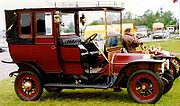

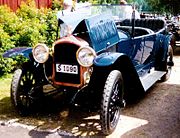

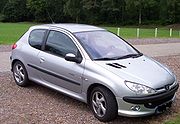
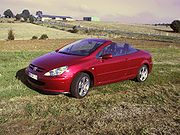
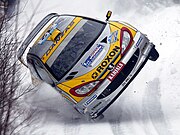



No comments:
Post a Comment